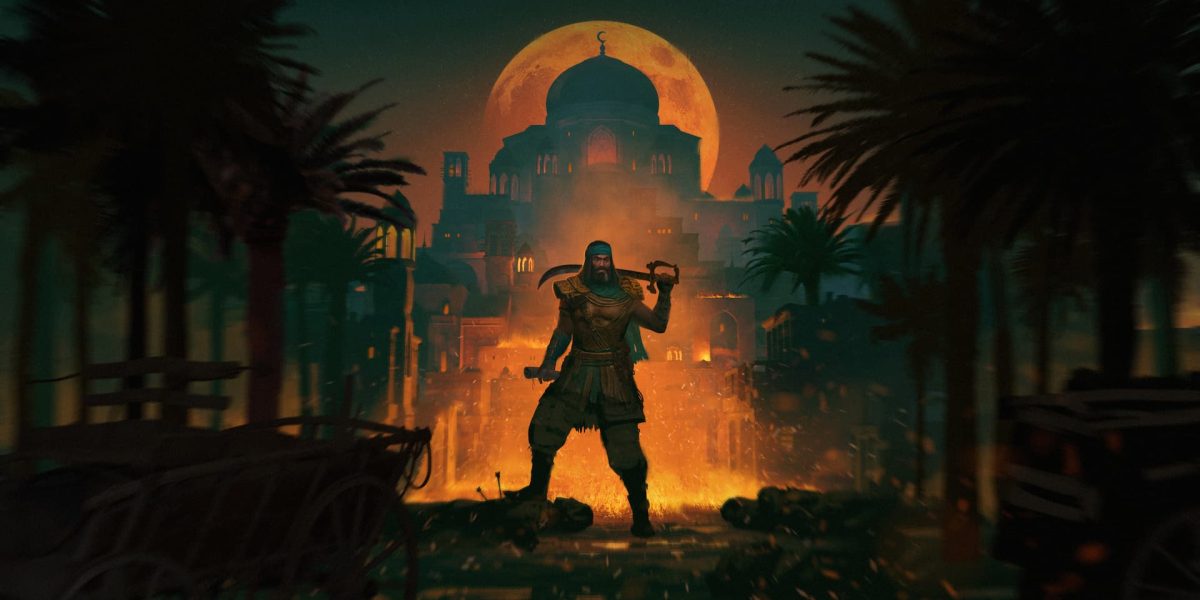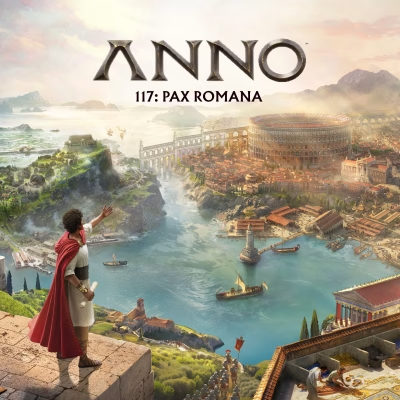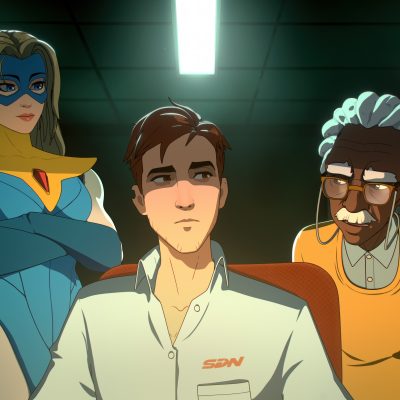When Permanent Way Studio first unveiled Blood of Mehran, the concept felt refreshing. Instead of another medieval Europe-inspired adventure or a futuristic sci-fi setting, we were promised a story rooted in the heart of Mesopotamia. It’s a world rarely explored in mainstream gaming, filled with deserts, fortified cities, and folklore steeped in myth and betrayal. The premise alone was enough to turn heads, and early previews teased a combat system blending stealth, melee duels, and archery.
Now that the game has finally launched, Blood of Mehran proves to be a curious case: it’s brimming with ambition, delivers moments of genuine excitement, but struggles under the weight of technical shortcomings and dated design. What emerges is a title that shines in concept but falters in execution—a flawed yet fascinating adventure that never fully realizes its potential.
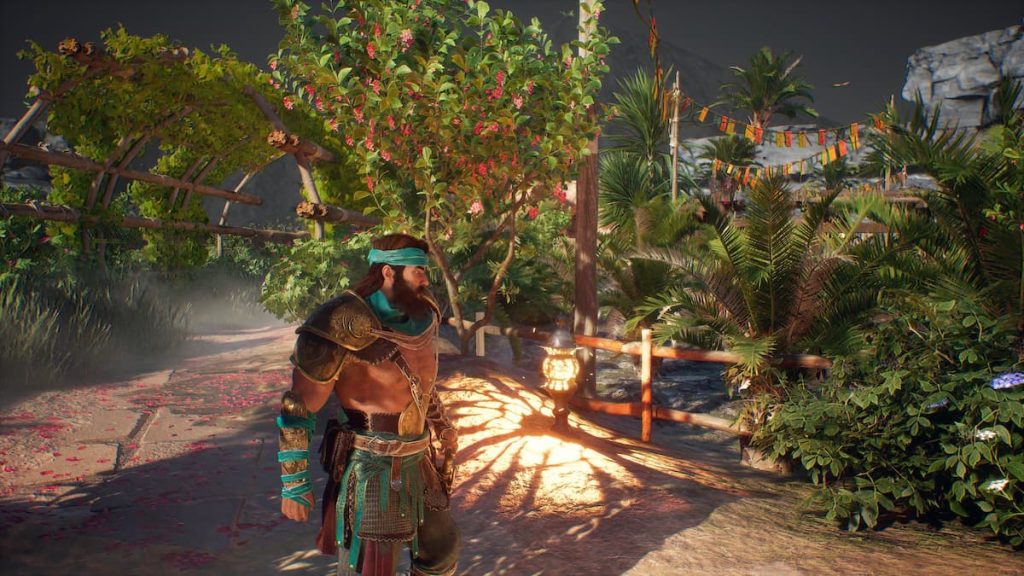
At the center of the story is Mehran, a seasoned warrior who sought peace after years of bloodshed. His quiet life is shattered when betrayal drags him back into conflict, forcing him to take up arms once again. The narrative wears its inspirations proudly—echoes of One Thousand and One Nights and timeless tales of honor and vengeance permeate nearly every chapter.
The setting itself elevates the storytelling. Markets bustle with life, desert ruins whisper of forgotten empires, and palace intrigue paints a world teetering between order and chaos. While the dialogue often lacks nuance—occasionally slipping into stiff or cliché exchanges—the broader narrative has weight. Key cutscenes are bolstered by striking art direction, and several late-game revelations lend the story more depth than one might initially expect.
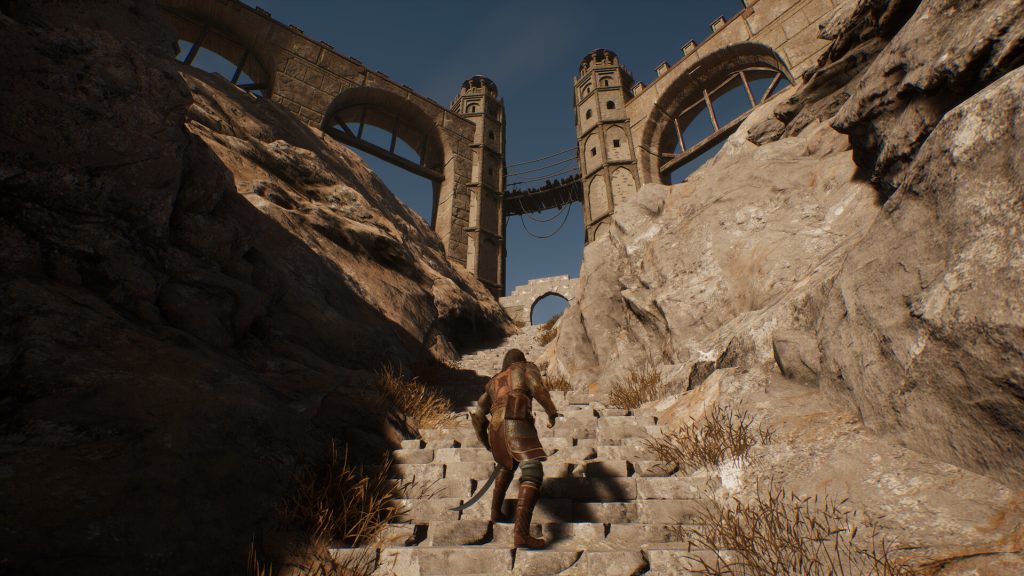
Yet, character development leaves something to be desired. Mehran himself is compelling enough, but his companions and adversaries often feel one-dimensional, serving more as archetypes than fully realized characters. The game’s writing never fully capitalizes on its rich historical and cultural inspiration, leaving untapped potential in the narrative department.
Where Blood of Mehran puts its best foot forward is in its combat. Players can mix and match approaches: dual-wielding blades for quick, aggressive encounters, a sword-and-shield style for defensive play, or ranged combat with a bow. Each method feels distinct enough, and the ability to fluidly transition between them keeps battles engaging at first.
There’s also a respectable attempt at incorporating stealth. Sneaking through enemy outposts, silently dispatching guards, and using the environment for cover provide a change of pace from head-on combat. Unfortunately, stealth mechanics are fairly rudimentary—enemies follow predictable patrol paths, and the AI rarely reacts intelligently when alerted. What begins as thrilling soon becomes routine.
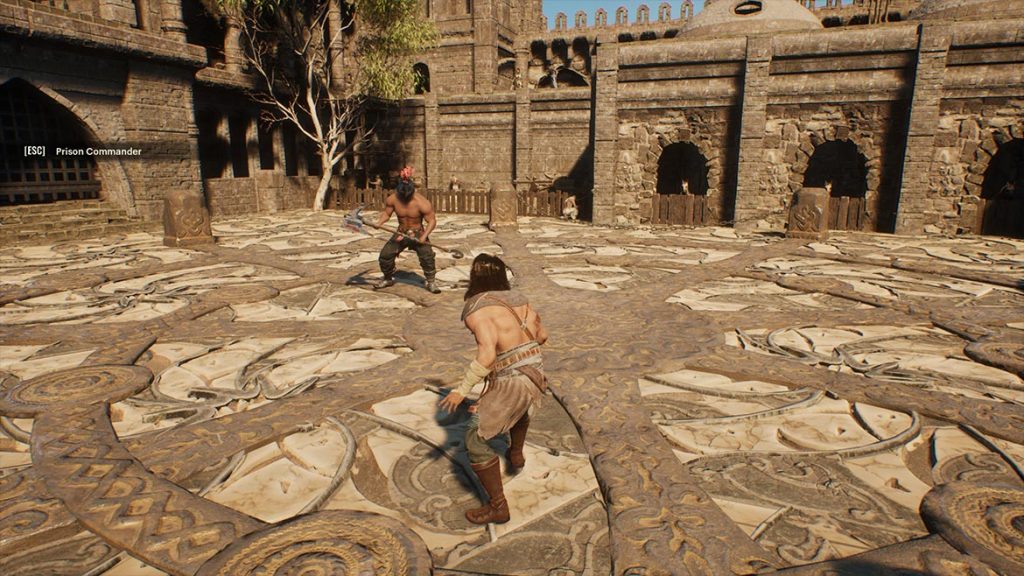
This sense of repetition extends to the game’s encounters. Enemy variety is limited, with too many fights boiling down to similar patterns. The skill tree does help by introducing new combos and abilities, but even these upgrades can’t completely mask the lack of depth in enemy design. Combat feels satisfying in bursts, but over extended play sessions, the cracks begin to show.
Despite these shortcomings, exploration in Blood of Mehran is rewarding. The developers clearly poured effort into making the world feel alive. From crumbling fortresses in the desert to the winding alleys of Mesopotamian cities, environments are packed with detail. The art direction is easily one of the game’s highlights, offering a setting rarely explored in gaming and executed with genuine care.
Level design, however, wavers. While some areas encourage creativity—giving players multiple routes to infiltrate or attack—others feel overly linear. The open areas occasionally feel barren, with stretches of empty terrain that serve little purpose beyond padding travel time. Still, when the world does come together, there are flashes of brilliance that remind you why this setting is so underutilized and so ripe with potential.
Graphically, Blood of Mehran is a mixed bag. Character models can appear stiff, and animations lack polish—sword swings sometimes clip awkwardly, and lip-syncing in dialogue scenes often feels off. On the other hand, environments are striking. Lighting in particular is used effectively; sunsets over the desert or the flickering glow of torch-lit chambers create moments of atmospheric beauty.
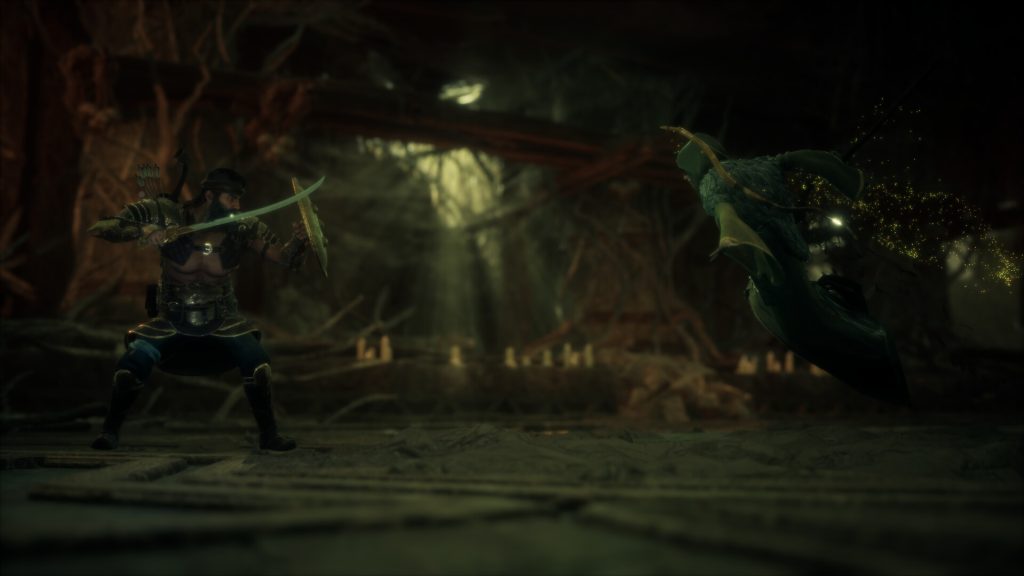
The sound design complements the visuals. The soundtrack fuses traditional Middle Eastern instruments with cinematic undertones, lending authenticity to the world. Ambient sounds—from the chatter of merchants to the howls of distant jackals—help immerse the player. Voice acting, unfortunately, is inconsistent. While some performances convey gravitas, others come across flat or unconvincing, occasionally pulling you out of the experience.
Perhaps the most glaring issue with Blood of Mehran is its technical instability. On PC, frame rate dips are common in crowded environments, and bugs can derail progress. Enemies sometimes get stuck in geometry, quest triggers fail, and save files have been reported to corrupt on rare occasions. Console performance fares slightly better, but load times remain frustratingly long.
These technical flaws undermine the experience. Just as the game builds momentum, a glitch or performance hiccup can shatter immersion. Given the game’s ambitious scope, it’s understandable that polish might be lacking, but the rough edges are too frequent to ignore.
Blood of Mehran is not without merit. Its unique setting, atmospheric world-building, and flexible combat system make it stand out in a crowded genre. There are moments where the game’s ambition shines, offering glimpses of what could have been a truly memorable adventure. But those moments are too often undercut by repetition, underdeveloped mechanics, and persistent technical issues.
For players intrigued by the Mesopotamian setting and willing to overlook flaws, Blood of Mehran provides an experience unlike most on the market. For everyone else, it may feel like a missed opportunity—a game with a strong vision but inconsistent execution.



